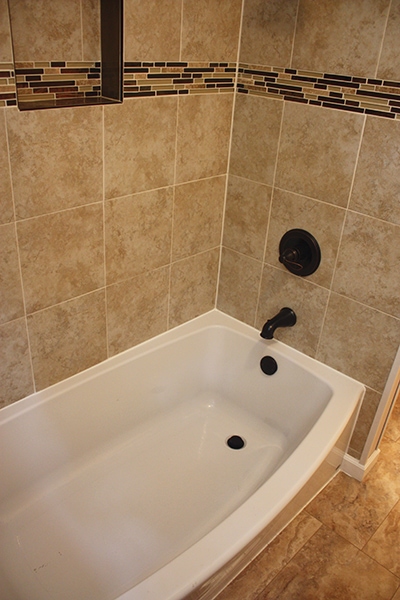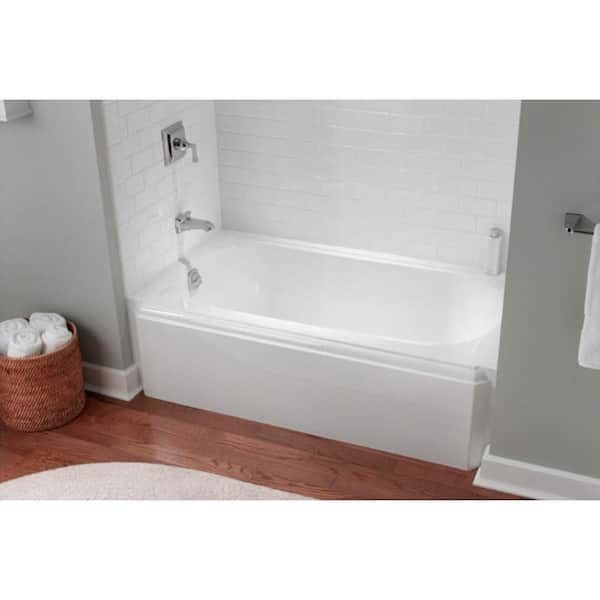Exactly How to Install a Tub Yourself: Removing and Replacing.
Exactly How to Install a Tub Yourself: Removing and Replacing.
Blog Article
What are your beliefs on How to Install a Bathtub?

Installing a tub isn't specifically rocket science, yet it does call for solid plumbing, carpentry, as well as occasionally, tiling skills. Changing an old bathtub with a new one is likewise a reasonably difficult job. If the old tub is easily obtainable, the project can move immediately; if you need to open up a wall to remove the old tub and position the brand-new bath tub, the job is much harder. In either case, the project is within a house handyman's abilities, although you will certainly require an assistant to vacate the old bathtub and set in the new one. Make sure you have certified on your own for the job and are comfortable attempting it. Rather than hiring a contractor to take over a halfway-completed project, it is better to think about employing one before you begin. Chances are you may need a professional plumber to make tube connections.
This short article will help you install a new bath tub in your washroom if you have actually currently acquired a brand-new bathtub as well as do not need to alter the plan of your previous supply of water pipes.
Your devices and also material checklist should comprise the following:
Getting ready for the Installation
Firstly, the supporting structure provided with the bath ought to be fitted (if required) according to the manufacturer's guidelines. Next off, fit the faucets or mixer to the bathtub. When fitting the tap block, it is important to see to it that if the faucet includes a plastic washer, it is fitted in between the bathroom and the taps. On a plastic bathroom, it is likewise sensible to fit a sustaining plate under the taps unit to stop stress on the bathtub.
Fit the flexible tap connectors to the bottom of both faucets using 2 nuts and olives (occasionally supplied with the tub). Fit the plug-hole electrical outlet by smearing mastic filler round the sink outlet hole, and after that pass the outlet with the hole in the bathroom. Use the nut provided by the manufacturer to fit the plug-hole. Analyze the plug-hole electrical outlet for an inlet on the side for the overflow pipeline.
Next off, fit completion of the versatile overflow pipe to the overflow electrical outlet. After that, screw the pipeline to the overflow face which must be fitted inside the bath. See to it you utilize all of the provided washers.
Connect the trap to the bottom of the waste electrical outlet on the bathtub by winding the thread of the waste electrical outlet with silicone mastic or PTFE tape, and screw on the catch to the outlet. Link all-time low of the overflow tube in a similar manner.The bathroom should now be ready to be suited its last position.
Removing Old Touches
If you require to replace old faucets with new ones as a part of your setup, after that the first thing you should do is detach the water. After doing so, turn on the taps to drain pipes any kind of water remaining in the system. The procedure of getting rid of the existing taps can be rather bothersome due to the restricted accessibility that is frequently the situation.
Make use of a container wrench (crowsfoot spanner) or a faucet tool to undo the nut that links the supply pipelines to the taps. Have a cloth prepared for the continuing to be water that will come from the pipelines. As soon as the supply pipes have been gotten rid of, use the exact same device to loosen the nut that holds the taps onto the bath/basin. You will certainly need to stop the solitary faucets from turning during this process. When the faucets have been eliminated, the holes in the bath/basin will certainly need to be cleaned of any type of old securing compound.
Before carrying on to fit the brand-new taps, contrast the pipeline links on the old faucets to the brand-new taps. If the old taps are longer than the new taps, then a shank adapter is needed for the brand-new faucets to fit.
Mounting the Bathtub
Making use of both wood boards under its feet, put the tub in the needed setting. The wooden boards are valuable in uniformly spreading the weight of the bathtub over the area of the boards as opposed to focusing all the weight onto four little points.
The next goal is to make sure that the tub is leveled all round. This can be accomplished by inspecting the level as well as changing the feet on the tub up until the spirit level checks out level.
To install taps, fit the bottom of the furthest flexible faucet adapter to the ideal supply pipe by making a compression join; then do the same for the various other faucet.
Turn on the supply of water and examine all joints and also brand-new pipework for leaks and tighten them if essential. Fill up the tub and additionally check the overflow outlet and also the regular electrical outlet for leaks.
Finally, fix the bathroom paneling as defined in the maker's user's manual. Tiling as well as sealing around the bath tub needs to wait till the tub has been used at the very least when as this will settle it right into its last setting.
Fitting New Touches
If the tails of the brand-new taps are plastic, then you will certainly need a plastic adapter to avoid damage to the string. One end of the connector fits on the plastic tail of the faucet as well as the other end supplies a connection to the current supply pipelines.
If you need to fit a monobloc, then you will certainly require lowering couplers, which connects the 10mm pipeline of the monobloc to the basic 15mm supply pipeline.
Next, place the tap in the placing hole in the bath/basin making sure that the washers remain in place in between the tap as well as the sink. Secure the faucet in place with the maker provided backnut. When the tap is safely in place, the supply pipelines can be connected to the tails of the faucets. The taps can either be linked by utilizing corrugated copper piping or with typical faucet connectors. The previous type must be connected to the tap finishes initially, tightening just by hand. The supply pipes can later on be linked to the various other end. Tighten both ends with a spanner after both ends have actually been linked.
Tiling Around the Bathtub
In the location where the bath satisfies the tile, it is essential to seal the accompanies a silicone rubber caulking. This is essential as the installation can move sufficient to crack a stiff seal, causing the water to permeate the wall between the bathroom and the tiling, causing difficulties with moisture and also possible leakages to the ceiling listed below.
You can select from a selection of coloured sealants to assimilate your components and installations. They are sold in tubes as well as cartridges, as well as can sealing spaces approximately a width of 3mm (1/8 inch). If you have a larger void to fill, you can fill it with spins of soaked newspaper or soft rope. Bear in mind to always fill the tub with water prior to securing, to permit the movement experienced when the tub is in usage. The sealer can fracture fairly early if you do not take into consideration this activity before securing.
Conversely, ceramic coving or quadrant tiles can be used to edge the bathroom or shower tray. Plastic strips of coving, which are easy to use and also cut to size, are likewise conveniently readily available on the market. It is recommended to fit the ceramic tiles using water-resistant or water-proof glue and also grout.
Bathtub Installation
How Important Is A Bathtub To Your Home?
High-quality baths, showers, and other bathroom updates are necessary when considering a smart investment in your home. It’s a room that you go to every day and one that is constantly being used by guests.The bathroom is one of the top trafficked rooms in a home and also one of the most valuable in terms of home resale.
Install Piping Before Tub
You will be using your existing drain and waste vent system, but pipes required include the hot and cold water supply lines and a pipe leading to a shower head. A mixing valve and shower head are also needed. Air chambers may be required.
Position the Tub
Lower the tub into place so that the continuous flange fits against the wall studs and rests on 1’x4' or 2’x4' supports. Anchor the tub to the enclosure with nails or screws inserted through the flanges into the studs.
NOTE: Remember, bathtubs and shower stalls may require support framing. A bathtub filled with water is extremely heavy, so check building codes and framing support before installing the tub.
Assemble Drain Connections
Assemble the bathtub drain connections by connecting the tub overflow with the tub drain above the trap, not beyond it. The trap will have a compression fitting that screws over the arm of the overflow assembly.
Place a Pipe For the Shower Head
First, locate a brass female threaded winged fitting and attach it to a framing support via a screw or a nail. Then run a pipe up the wall for the shower head. Sweat or solder the other side of the brass fitting to the top of the pipe.
Attaching Hot and Cold Water Lines
Attach your water lines for both hot and cold by sweating these directly into the hot and cold ports of the mixing valve. The mixing valve will be how water enters the tub’s system, not by the pipes themselves.
Install the Spout
Extend a piece of 1/2 inch pipe, or whichever length is specified in the manufacturer’s instructions, for the tub spout. Sweat on a male threaded fitting at the end of the pipe or use a brass nipple of the proper length and a 1/2 inch cap.
NOTE: At this point you should have your rough-in plumbing work inspected before proceeding further.
Check For Leaks
Restore the water pressure and check the drain connection and the supply pipes for any sign of leaking.
estore the Bathroom Wall
Replace the wall with moisture-resistant drywall as a base for your wall covering. Seal the joints between the wall and your new tub with silicone caulk as protection against water seepage.
https://www.berkeys.com/2016/12/02/bathtub-installation-dallas/

We had been made aware of that write-up on How to Install a Bathtub Yourself through someone on a different web blog. Don't hesitate to set aside a second to promote this entry if you appreciated it. Thank you for your time invested reading it.
Instant Quote Report this page